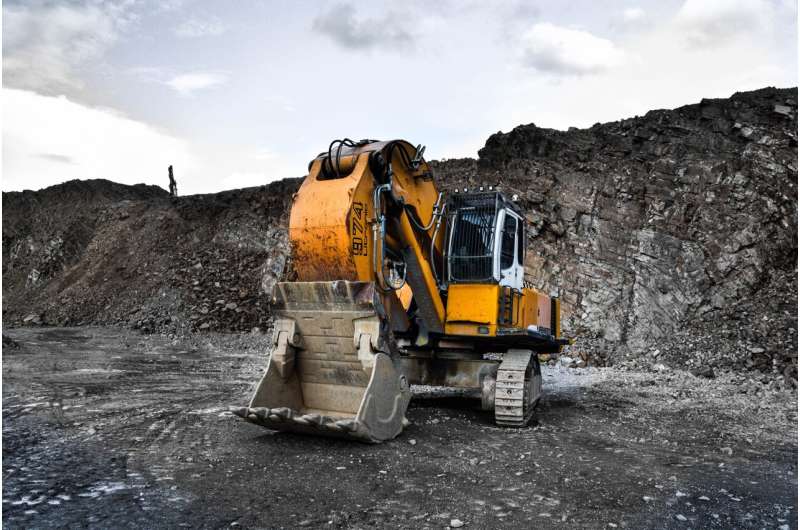Workers making artificial-stone slabs for the most popular type of countertops sold in the United States are developing a potentially deadly, irreversible lung disease from tiny particles of toxic dust, researchers from UC San Francisco and UCLA found in the largest U.S. study of this emerging health crisis.
When the synthetic quartz is cut, ground and polished, lung-damaging dust is released into the air, leading to a disease called silicosis. The disease has plagued miners and cutters of natural stone for centuries, but the engineered stone is far more dangerous due to its high concentration of silica, a natural product in sandstone, and the harmful polymer resins and dyes that are added to the engineered product.
This growing occupational hazard has been sickening and claiming the lives of workers, predominantly young Latino men, at an alarming rate since the first U.S. silicosis case due to engineered stone was reported in 2015, according to the study published in the July 24, 2023, edition of JAMA Internal Medicine.
“Increasing case counts of silicosis among stone fabricators over the last 10 years and accelerated progression of disease transforms the paradigm of an all-but-previously-forgotten disease in the U.S.,” said Jane Fazio, MD, a pulmonary specialist at Olive View-UCLA Medical Center and co-author of the study. “Our study demonstrates severe morbidity and mortality among a particularly vulnerable group of young underinsured and likely undocumented Latino immigrant workers.”
The human cost of engineered quartz
The risk of silicosis from artificial stone was first identified in Israel in 2012. Since the first U.S. case of silicosis linked to engineered stone was identified in Texas in 2015, California has become an epicenter of the disease.
Researchers from UCSF and UCLA collaborated with the UCSF California Labor Laboratory and the California Department of Public Health to identify 52 California engineered-stone workers diagnosed with silicosis, 51 of whom were Latino immigrants. Most were diagnosed between 2019 and 2022. Twenty of the patients had advanced disease at diagnosis, and have 10 died. Their median age was 45 years old, with an average work history of 15 years.
One of them is Leobardo Segura-Meza, who was born in Mexico and immigrated to the U.S. in 2012. He found employment in Los Angeles as a stone worker 10 years ago, cutting and grinding at the age of 17.
Despite taking health precautions by wearing a mask and using dust-reducing tools, Segura-Meza went to the emergency room with shortness of breath in February 2022, and a lung biopsy revealed he had silicosis. The 27-year-old has been on an oxygen tank since then and can no longer financially support his wife and three young children.
While Segura-Meza has been approved for a lung transplant, he fears he’ll run out of time. Two fellow stone workers died while on the waiting list. “Every day I hope that the phone rings telling me to come to the hospital to get my new lungs,” said Segura-Meza, who was hospitalized last month with a collapsed lung.
Calling for change to stop killer stone
The study’s authors called for public health officials, clinicians and policymakers to implement measures to better protect workers from exposure to silica dust, more quickly diagnose the disease and even ban the product.
“Our paper raises the alarm,” said Sheiphali Gandhi, a UCSF pulmonologist and co-author of the study. “If we don’t stop it now, we’re going to have hundreds if not thousands of more cases. Even if we stopped it now, we’re going to be seeing these cases for the next decade because it takes years to develop.”
No country has yet banned the product, but Australia has considered it and is developing new regulations to help reduce the risk of silicosis through such requirements as better air monitoring, training and reporting. In California, the Los Angeles County Board of Supervisors is weighing a potential ban, and the state’s Division of Occupational Safety and Health, known as Cal/OSHA, has begun drafting emergency rules.
The study’s authors also called for early diagnosis and minimizing further exposure, both of which are challenging due to lack of health care access and the need for workers to support their families. Of the patients in the study, 45% continued working after their diagnosis.
More information:
JAMA Internal Medicine (2023). jamanetwork.com/journals/jamai … ainternmed.2023.3295
Citation:
Deadly dust: Engineered stone is making California workers sick (2023, July 24)
retrieved 26 July 2023
from https://medicalxpress.com/news/2023-07-deadly-stone-california-workers-sick.html
This document is subject to copyright. Apart from any fair dealing for the purpose of private study or research, no
part may be reproduced without the written permission. The content is provided for information purposes only.


